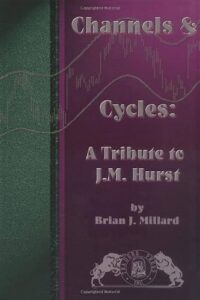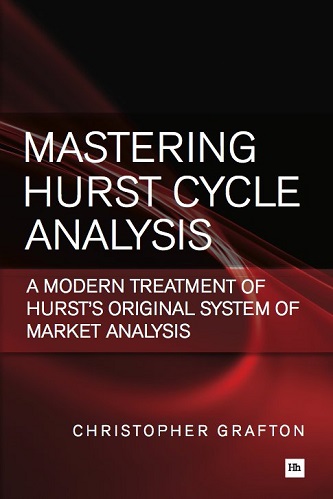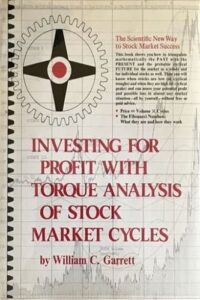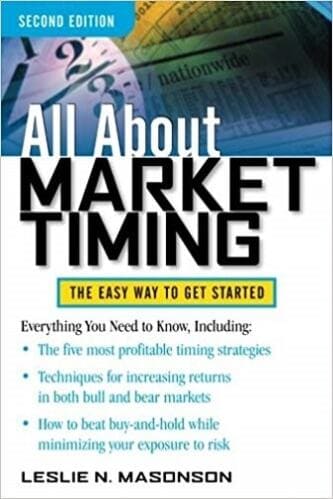Articles
Natural Resistance Levels and Time Cycle Points By Bradley F. Cowan
The Resistance Levels given below are based upon natural law and can be applied to the measurement of both Time and Space. Around these points stocks meet resistance going up or down or traveling the same number of points from a top to a bottom. Tops and bottoms of major and minor movements come out on these Resistance Levels.
When man first began to learn to count, he probably used his fingers, counting 5 on one hand and 5 on the other. Then counting 5 toes on one foot and 5 on the other, which made 10, he added 10 and 10 together, which made 20, adding and multiplying by 5 and 10 all the way through. This basis for figuring led to the decimal system, which works out our 5, 10, 20, 30 and other yearly cycles, as well as other resistance points. Man’s basis for figuring is 100, or par, on stocks and $1.00 as a basis of money value. Therefore the ¼, 1/8, 1/16 points are all important for tops and bottoms and for buying and selling levels.
Taking the basis of 100, the most important points are 25, 50 and 75, which are ¼, ½ and ¾. The next most important points are 33 1/3 and 66 2/3, which are 1/3 and 2/3 points. The next points in importance are the 1/8 points, which are 12½. 37½, 62½ and 87½. The next in importance are the 1/16 points, which are 6¼, 18¾, 31¼, 43¾, 56¼, 68¾, 81¼ and 93¾.
Since 9 is the highest digit, it is very important for Resistance Levels in Time and Space. The most important levels according to 9 are: 9, 12, 27, 36, 45, 54, 63, 72, 81, 90, 99, 108, 117, 126, 135 and 144. You will note that many of these points correspond with the other Resistance Levels and correspond with the Master 12 Chart which gives important Resistance Levels, because 12 is simply 9 with 1/3 of 9 added to it.
The second important Resistance Levels formed by the digit of 9 are the ½ points, which are as follows: 4½, 22½, 31½, 40½, 49½, 58½, 67½, 76½, 85½, 94½, 103½, etc. You simply add ½ of 9 or 4½ to any figure, or figure coming out on equal numbers of 9.
The next important Resistance Levels are those formed by 12 and its multiples. These are very important on account of the 12 months in the year. The points also come out very close to many of the other important Resistance points measured on the basis of 100 and 9 and also the points in the division of the circle of 360°. The most important points of resistance according to 12 are: 12, 18, 24, 30, 36, 42, 28, 54, 60, 66, 72, 78, 84, 90, 96, 102, 108, 114, 120, 126, 132, 138, 144, and the other points which you can see on the Master 12 Chart or square of 12 x 12. A separate explanation of the Master 12 Chart gives these other important points. Tops and bottoms of most stocks come our remarkably close to a basis of 12.
Suggested Books and Courses About Cycle Trading and Market Timing
The circle of 360° when divided into its geometrical parts proves the reason of all Resistance Levels and measures time and volume as well as space very accurately. It is important to divide the circle by 2, 3, 4, 5, 6, 8, 9 and 12, to get the important Resistance Levels.
We first divide the circle by 2 and get 180, which is the strongest Resistance Level because it is the gravity center or ½ point. It equals 180 months or 15 years, which is ¾ of the 20-year cycle and ½ of the 30-year cycle, which is very important.
We next divide the circle by 4 and get 90, 180, 270 and 360. These are very important points because they equal 7½ years, 15 years, and 22½ years which is ¾ of the circle. These points in days, weeks, or months mark the beginning and the ending of important Time Cycles, as well as being important Resistance Levels when the price reaches them, especially when the time is up.
The next important levels we obtain by dividing 360 by 3, getting 120 as 1/3 and 240 as 2/3 point. These equal the 10-year cycle and the 20-year cycle, and of course the third point, or 360, is the 30-year cycle.
Dividing the circle by 12, we get the following important points, which correspond with other points: 30, 60, 90, 120, 150, 180, 210, 240, 270, 300, 330 and 360. 150 and 210 are very important because 150 is within 30 months of the 180° angle or ½ between 120 and 180. 210 is ½ point between 180 and 240.
After dividing the circle by 12, it is next important to divide by 24, because there are 24 hours in a day, and the Earth moves 15° every hour or 360° in 24 hours. Therefore we get the following points: 15, 30, 45, 60, 75, 90, 105, 120, 135, 150, 165, 180, 195, 210, 225, 240, 255, 270, 285, 300, 315, 330, 345, 360. If we divide 15 by 2, we get 7½. Adding this to any of the other points gives an important point which corresponds to many of the other Resistance Levels. For example: Adding 7½ to 15 gives 22½, which is 1/16 of a circle. 150 is an important point and if we add 15 to this, we get 165, which is the ½ point between 150 and 180; 180 being one of the strongest angles. Get your other important points in the same way by adding 7½ or 15.
Dividing the circle by 8, we also get very important points, which are: 45, 90, 135, 180, 225, 270 and 315. 135 is very important because it is 180° from 45. 315 is very important because it is the opposite of 135 and 90° from 45.
The next important points for resistance and measurement of time are obtained by dividing the circle by 16, which gives 22½, 45, 67½, 90, 112½, 135, 157½, 202½, 225, 247½, 292½, 315 and 337½.
The points obtained by dividing the circle by 32 are also important because they measure out cycles closely in accordance with the Master 12 Chart and come out closely with the months. These points are 11¼, 33¾, 56¼, 78¾, 101¾, 123¾, etc., just simply adding 11¼ to any of the other figures to get the next figure.
The lowest division of the circle of any importance is 1/64, which is 5 5/8 and ½ of 11¼. These are of minor importance but tops and bottoms often come out on these points, especially when we are nearing the end of a major cycle. These points are as follows: 5-5/8, 16-7/8, 23- 1/8, 39-3/8, 50-5/8, 61-7/8, 73-1/8, 84-3/8, 95-5/8, 106-7/8, 118-1/8, 129-3/8. All of these points are the ½ points between the other important points. 22½ is ½ of 45, 11¼ is ½ of 22½, and 5-5/8 is ½ of 11¼.
It is very important to divide the circle by 9 because 9 is the highest digit used. Dividing by 9 we get the following important points: 40, 80, 120, 160, 200, 240, 280, 320, 360, all very important Resistance Levels and corresponding with many of the other Resistance Levels calculated from the different points.
Dividing these points by 2, we get 20, 40, 60, 80, 100, 120, 140, 160, 180, 200, 220, 240, 260, 280, 300, 320, 340, 360. Many stocks work to these points of a circle in division of time, making top and bottoms according to price and according to months. I use these points and the Master 12 points and the other important points obtained through dividing the circle by 2, 4 and 8, as the most important Resistance Levels in measuring the Time cycles.
If you will take the time to go over any stock running back 10 to 30 years, checking all important tops and bottoms, you will see how well these points work out both in Time and Space. In checking the Weekly High and Low Chart, you will find more of them working out than you can see on the Monthly, because there are bottoms and tops made on weekly moves which do not show on the Monthly High and Low Chart. Then checking up on the Daily Chart, you will find minor moves working to these points which do not all show on the Weekly High and Low Chart.
To determine Monthly movements, it is important to divide the year by 4, which gives the seasonal changes or the four quarters, which equal about 90° in time or 90 days and come to the strong Resistance Levels. Watch for changes every 3, 6, 9 and 12 months. Most stocks make changes of importance at the end of each 12-month period. The next important thing to do is to divide the year by 3, making 4 months, 8 months and 12 months important points to watch. Dividing 52 weeks or one year by 4 gives 13 weeks, 26 weeks, 39 weeks, as important points to watch for change in trend. Divide 52 weeks by 3 to get the 1/3 points. On this basis the 17th to 18th week and the 35th to 36th week will be important points to watch for a change in trend.
When any important Time Cycle is running out, watch your Daily and Weekly High and Low Charts for an indication that top or bottom is being reached. Keep up your angles closely, as the angles will determine when the trend is changing. One good rule to use after a very extended campaign, which has run 50 points or more in space, is to take the greatest move on the way up or down and then when it exceeds this on a reaction it indicates that the trend is changing. Another way is to take 1/12 of the total movement. Suppose a stock has advanced 144 points, then 1/12 of 144 points is 12 points. As a rule, when a stock has advanced this much and reacts 12 points, especially if reactions have been smaller up to this time, it indicates that the move is coming to an end. Some stocks will go up and never react more than ¼ of the total distance traveled, others will react 1/3 of the distance and others will react to the ½ point. Always calculate from where the move starts the last time and watch the ½, ¼ and 1/3 points from the last bottom or top, as well as your calculations from the major bottoms and tops.




